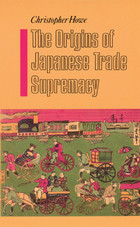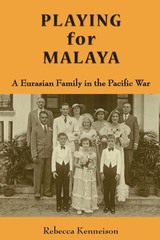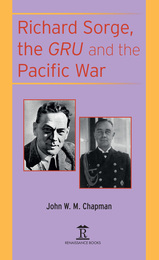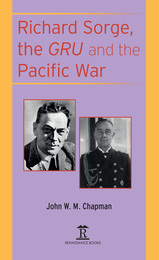4 books about Pacific War

The Origins of Japanese Trade Supremacy
Development and Technology in Asia from 1540 to the Pacific War
Christopher Howe
University of Chicago Press, 1996
Synthesizing a wide range of scholarship Christopher Howe traces the history of Japanese trade over four centuries and locates the sources of Japan's current commercial and financial strength in events that began in the sixteenth century.
"Thoughtful, well-organized, and lucidly written and reflects many years of painstaking research in different literatures."—Business Horizons
"The best analysis yet in English of the role of technology in Japan's emergence as a global economic power."—David J. Jeremy, Technology and Culture
"An important addition to Japanese economic history and the concept of creating relative advantage in trade."—Richard Rice, Journal of Asian Studies
"No other work in English approaches Christopher Howe's combination of a sweeping historical perspective with a comprehensive yet in-depth analysis of factors underlying Japan's pre-1940 economic 'miracle.' . . . [An] illuminating study."—Steven J. Ericson, American Historical Review
"Thoughtful, well-organized, and lucidly written and reflects many years of painstaking research in different literatures."—Business Horizons
"The best analysis yet in English of the role of technology in Japan's emergence as a global economic power."—David J. Jeremy, Technology and Culture
"An important addition to Japanese economic history and the concept of creating relative advantage in trade."—Richard Rice, Journal of Asian Studies
"No other work in English approaches Christopher Howe's combination of a sweeping historical perspective with a comprehensive yet in-depth analysis of factors underlying Japan's pre-1940 economic 'miracle.' . . . [An] illuminating study."—Steven J. Ericson, American Historical Review
[more]

Playing for Malaya
A Eurasian Family in the Pacific War
Rebecca Kenneison
National University of Singapore Press, 2011
Reggie, according to his niece Wendy, 'only told you what Reggie wanted you to know.' Reggie was my father. He had honed the technique of talking with apparent openness and using that talk as a decoy duck: while you were listening to it quack around the pond, you weren't noticing all the others hiding in the reeds. What follows includes tales that Reggie told repeatedly but, on the whole, it's about what Reggie didn't tell me.
So begins a stunning personal account of a Eurasian family living in Malaya. One of the many gaps in Reggie's account of his family was that his mother was Eurasian. When Rebecca Kenneison discovered this omission after his death, she set out to learn more about her extended family on the other side of the world. Her voyage of discovery is compelling in itself, but Playing for Malaya has a much larger purpose. Set in the 1930s and 1940s, it recounts the experiences of an extended Eurasian family during the invasion and occupation of Malaya by the Japanese. Colonial society considered Eurasians insufficiently European to be treated as British, but they seemed all too European to the Japanese, who subjected the Eurasian community to discrimination and considerable violence. Because many Eurasians, including members of the Kenneison family, supported the Allied cause, their wartime experiences are an extraordinary account of tragedy, heroism and endurance, presented here with great consequence and clarity.
So begins a stunning personal account of a Eurasian family living in Malaya. One of the many gaps in Reggie's account of his family was that his mother was Eurasian. When Rebecca Kenneison discovered this omission after his death, she set out to learn more about her extended family on the other side of the world. Her voyage of discovery is compelling in itself, but Playing for Malaya has a much larger purpose. Set in the 1930s and 1940s, it recounts the experiences of an extended Eurasian family during the invasion and occupation of Malaya by the Japanese. Colonial society considered Eurasians insufficiently European to be treated as British, but they seemed all too European to the Japanese, who subjected the Eurasian community to discrimination and considerable violence. Because many Eurasians, including members of the Kenneison family, supported the Allied cause, their wartime experiences are an extraordinary account of tragedy, heroism and endurance, presented here with great consequence and clarity.
[more]

Richard Sorge, the GRU and the Pacific War
John W.M. Chapman
Amsterdam University Press, 2020
Sorge’s activities between 1930 and 1942 have tended to be lauded as those of a superlative human intelligence operator and the Soviet Union’s GRU (Soviet military intelligence unit) as the optimum of spy-masters. Although it was unusual for a great deal of inside knowledge to be obtained from the Japanese side, most attention has always been paid on the German side to the roles played by representatives of the German Army in Japan. This book, supported by extensive notes and a bibliography, by contrast, highlights the friendly relations between Sorge and Paul Wenneker, German naval attaché in Japan from 1932 to 1937 and 1940–45. Wenneker, from extensive and expanding contacts inside the Japanese Navy (and also concealed contacts with the Japanese Army) supplied Sorge with key information on the depth of rivalry between the Japanese armed services.
[more]

Richard Sorge, the GRU and the Pacific War
John Chapman
Amsterdam University Press, 2020
Sorge’s activities between 1930 and 1942 have tended to be lauded as those of a superlative human intelligence operator and the Soviet Union’s GRU (Soviet military intelligence unit) as the optimum of spy-masters. Although it was unusual for a great deal of inside knowledge to be obtained from the Japanese side, most attention has always been paid on the German side to the roles played by representatives of the German Army in Japan. This book, supported by extensive notes and a bibliography, by contrast, highlights the friendly relations between Sorge and Paul Wenneker, German naval attaché in Japan from 1932 to 1937 and 1940–45. Wenneker, from extensive and expanding contacts inside the Japanese Navy (and also concealed contacts with the Japanese Army) supplied Sorge with key information on the depth of rivalry between the Japanese armed services.
[more]
READERS
Browse our collection.
PUBLISHERS
See BiblioVault's publisher services.
STUDENT SERVICES
Files for college accessibility offices.
UChicago Accessibility Resources
home | accessibility | search | about | contact us
BiblioVault ® 2001 - 2024
The University of Chicago Press









